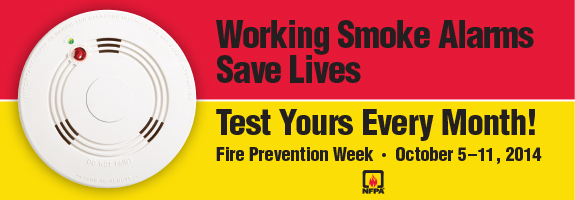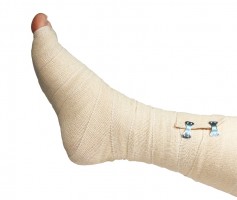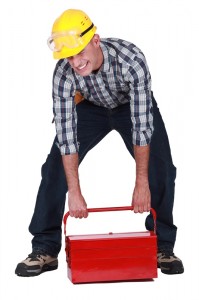
The 2014 National Fire Protection Association’s (NFPA) National Fire Prevention Week is October 5 – 11. This year’s theme is: “Working Smoke Alarms Save Lives.” Below are some fast facts on fire prevention and workplace safety from the Department of Administrative Services (DOAS) Risk Management Services Division.
SMOKE ALARMS:
- Smoke alarms cut the risk of dying in a reported fire in half.
- Roughly two-thirds of home fire deaths happen in homes with no smoke alarms or no working smoke alarms. About one in five smoke alarm failures was due to dead batteries.
- In fires considered large enough to activate the smoke alarm, hardwired alarms operated 91% of the time, while battery powered alarms operated only 75% of the time.
- In more than half of the reported home fires in which the smoke alarms were present, but did not operate even though the fire was large enough, batteries were missing or disconnected. Nuisance alarms were the leading reason for disconnected alarms.
- More than half of the smoke alarms found in reported fires and two-thirds of the alarms found in homes with fire deaths were powered by battery only.
- Interconnected smoke alarms on all floors increase safety.
ESCAPE PLANNING:
- Almost three-quarters of Americans do have an escape plan; however, less than half actually practice it.
- One-third of Americans’ households who made an escape plan thought they would have at least 6 minutes before a fire in their home would become life threatening. The time available is often less. Only 8% said their first thought on hearing a smoke alarm would be to get out!
CAUSES OF FIRE:
- Cooking is the #1 cause of home fires and injuries.
- Smoke inhalation is the leading cause of fire deaths.
- Heating is the second leading cause of home fires, fire deaths and fire injuries.
- 53% of home electrical fires involved other known types of equipment, including ranges, washers/dryers, fans and space heaters.
Let’s work together to make Georgia a safer place to work!


 Strains and sprains accounted for more than 15% of Fiscal Year 2014 injuries in state government. If you include falls, slips and trips, 40% of injuries are related to strains and sprains. Nationally, the numbers are about the same, where 39% of injuries are sprains or strains.
Strains and sprains accounted for more than 15% of Fiscal Year 2014 injuries in state government. If you include falls, slips and trips, 40% of injuries are related to strains and sprains. Nationally, the numbers are about the same, where 39% of injuries are sprains or strains.



